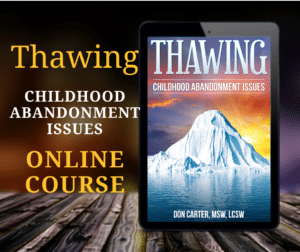
The Formula for a Happy Child
What makes a happy child? This is my favorite question to answer for several reasons…
- I am a grandpa who loves to make kids happy
- It’s the most important question – kids are our future
- Happy kids grow up to be happy adults
- An unhappy child is no fun to be around
- It’s an easy question to answer!
By the way, part of being a happy kid is having the ability to do well in school. If you have young children check out this great resource when you get a chance… Budding Scholars Educational Toys
Childhood Dependency Needs
- Time
- Attention
- Affection
- Direction
- Guidance
- Discipline
Children may not come with an owner’s manual — but if they did, the section on the happy child would not be very complicated because there is a simple formula…
- Consistently met emotional dependency needs = a happy child.
Small children cannot meet their own needs, much like a plant cannot water itself. The happy child depends on his or her caretakers to meet these needs… As we grow we become more independent, increasingly able to meet our own needs.
There are two groups of dependency needs…
The first group is the survival needs – These are what Maslow calls the basic needs for food, shelter, clothing, medical attention, safety, and protection. If these needs are not met, at least to a minimal degree, the child is likely to die. Notice that the survival needs include their need to feel safe and protected… If a child does not feel safe she cannot relax… She is always on guard, scanning her environment for danger…
Her anxiety level is very high and she has to stay alert and “tuned in” to everything going on around her causing her to become hyper-vigilant, hyper-alert, and/or hyper-sensitive…she is definitely not a happy child. Feeling safe helps a happy child relax – if they can’t relax they can’t play… If they can’t play it interferes with their growth… Play is how children learn and grow along normal developmental lines.
Because feeling safe is so important, children have a built-in psychological defense mechanism called idealization which functions to help them feel safe. Through idealization, children – not referring to teenagers here – set their parents up on a pedestal seeing them as godlike creatures… This makes them feel safe because “if I am protected by a godlike creature and then nothing can get to me” (John Bradshaw).
Of course, children cannot yet think that way, but they “get it” that way in an emotional sense…a concept known as “felt-thought”. Idealization is the primary catalyst for the infection of shame…we explore that in the “Iceberg”, Part I. The emotional dependency needs are what Maslow refers to as the basic needs for love and esteem… These are the needs that nourish a happy child emotionally.
Getting these needs met fully on a consistent basis…the happy child thrives and flourishes. If these needs are not met consistently, the child suffers to an extent proportional to their lack of need fulfillment. Pia Mellody and John Bradshaw both refer to the following as primary emotional dependency needs – Time, Attention, Affection, and Direction.
The Happy Child Needs Time
In his video Shame and Addiction, Bradshaw states… “Little kids get it that whatever their parents give their time to is what they love.” So, to a happy child… time = love. For example, If dad is gone working 12 to 14 hours a day – which may be his way of showing love – the kids feel that dad loves whatever he is doing more than he loves them.
They don’t understand about budgets and bills… They don’t understand that this may be the dad’s way of demonstrating his love for the family. All they know is he is usually gone. And when he comes home he is too tired to spend time with them… all he has the energy to do is rest, read the paper, and watch some TV.
The happy child gets quality time from both parents – not just one. They need enough time from each parent to get the message that they are loved as much as anyone else in the family. It is not as much a question of quantity as it is of consistency and quality. “Quality time” is when the child’s other three primary emotional needs are also being met.
The Happy Child Needs Attention
Just as children equate time with love… they get it that: attention = worth or value. Attention is more than just listening to the child – it’s attending to them.
Parents of a happy child:
- Listen, try to understand, and take them seriously
- Show genuine concern about who they are, what they think and how they feel
- Notice when they are struggling with a feeling and help them figure out what it is and what to do about it
- Know how their day went, who they are hanging out with, what the highlight of their week was
Happy Children get lots of attention – If they don’t get it their behavior becomes attention-seeking. This is not usually deliberate on their part… Most of the time children really don’t know why they act in ways that are obviously designed to get attention. They are compelled to do it because they need attention – not because they want attention.
When was the last time you heard this statement… “Oh, he is just trying to get attention, just ignore him!” Sometimes this is bad advice…other times it is not. There are two reasons kids show attention-seeking behavior:
- When they’re not getting enough attention and genuinely need it.
- When they are getting too much attention – in which case it’s an issue of discipline rather than attention.
Think of the latter as a request for direction or discipline-seeking behavior. Kids need direction in the form of guidance and discipline. While ignoring certain behaviors has its place in the toolbox… it’s important to provide direction when the opportunity arises – Especially if it is not an isolated incident. Finding a balance between the attention & discipline is difficult, but the balance must be struck early on.
The Happy Child Needs Affection
As a therapist, it’s been my experience that affection is the area where many families seem to fall short. Many of my clients have told me… “Well, mine was not the most affectionate parents in the world, but I always knew they loved me”. I’m sure it’s true that they were loved – However, I am also sure that kids need hugs, kisses, pats on the back, and words of encouragement on a regular basis.
To children Affection = Approval
Displays of affection are how approval messages are sent from the parent to the happy child. Affection says:
- “I like you”,
- “I like who you are and who you are becoming”,
- “I’m glad you are my child”,
- “I’m glad I get to be your parent”,
- “I’m glad you are in this family”,
- “I’m proud of you”,
- “I Love you”.
Some parents even come right out and say these things to their kids! Affection is how the happy child gets the message that they measure up – they are approved of by those god-like creatures… How many of us know a child who is not sure what his father thinks of him? Or one who is not sure whether she measures up to her mother’s expectations? – How many of us are still not sure if we “measure up”?
Kids who don’t get enough affection act-out their need for approval by trying to please mom or dad. When their attempts at getting approval go unnoticed they try harder and harder to please them… this creates a deeply embedded neural network we refer to as people-pleasing.
The Happy Child Needs Direction
Children are born not knowing how to do things. They are biologically programmed to survive in the wild by crying when they have a need. However, everything else about how to live in society must be learned, including how to do relationships, how to behave in public, how to control our impulses, etc. A happy child has available & approachable parents who give them direction and teach them these things.
Our caretakers are our teachers. Dad shows us what it means to be a man in the world… mom shows us what it means to be a woman… and together they show us how men and women get along with each other. In other words, our cultural and interpersonal neural networks come through the modeling of our parents, whether they realize it or not…this is why the “do as I say, not as I do” approach to guidance and discipline doesn’t work.
In the ideal situation, parents do realize the powerful influence their behavior has on the development of their happy child. They also know that to be good teachers they have to be available and approachable – i.e., the happy child knows when and where to find dad or mom and they know that it is okay to go to them for advice and assistance.
To be available goes back to the issues of time and attention, parents must make the time to attend to the questions of their kids. To be approachable they must also be patient, tolerant, and affectionate. Good teachers understand that kids need repetition to learn – that’s how our neural networks are formed – They have to ask and be shown more than once in order to develop competence at a certain task.
A sense of competence and mastery are critical to the development of a happy child’s sense of self. For instance, when a parent teaches a child to ride a bike they hold on, hold on, and hold on until the child gets her balance and then they let go… Usually, the child will crash a time or two but soon they take off and ride.
Did you ever see a child take off on a bike for the first time? They light up like a Christmas tree and almost universally shout the same thing… “Look at me! I’m doing it!” – talk about a happy child! The “I can do it!!” is a statement of competence and provides a huge boost to their ego. After a while, you might hear the same child shout “Look at me! I’m doing it with no hands!” This shows that the happy child now has a sense of mastery…and maybe a bit too much courage.
Do you ever wonder why kids do the same thing over and over again once they become proficient at it and avoid things they might not do well? Satisfying the need for a sense of competence and mastery is the reason. The happy child gets as many I-can-do-it experiences as we can give him or her… Things like tying their shoe for the first time, driving a car, going on a date, learning to dance, getting good grades, learning to cook, hitting a baseball, etc.
The more networks they feel competent in the better! It’s like a snowball rolling downhill… they eventually reach a point that they have started an “I can do it” neural net – when that happens they are set for life. Approachable teachers help without resorting to shameful criticism when raising a happy child. It is truly an art, and most of us were raised on shamming criticism so it is difficult to learn.
Healthy critical feedback comes with love, tolerance, and without shame. For example, healthy criticism might sound like this: “I know it’s difficult”… “You are really doing very well…I fell off more than this when I was your age.” … “I know you can do it, let’s try one more time for today.”
Shameful criticism sounds like this, “Oh come on, don’t be a big baby!” “You always make things more difficult than they should be.” “Your brother took off on his first try… are you going let him make you look bad?” One other issue regarding guidance is over-protection. There are some families that have rigid, sometimes extremely over-controlling rules designed to “protect” the child…
For example, “the training wheels don’t come off until you are twelve years old”, “you are not allowed to climb trees”, “you can go outside but don’t do anything”, and “you must wear a football helmet if you are going to get on the swing set”. The over-protective parent also does everything for the child… even that which the child should be able to do for themselves.
Over-protection and over-involvement is a result of a parent’s inability to tolerate any chance that their child might get hurt physically or emotionally – by failure or disappointment. Over-protection can easily be mistaken for love, when in fact it is not… It’s more about the parent’s need to feel safe than it is about the child’s need.
The child not only misses out on the I-can-do-it experiences but also gets a message from the god-like creatures in his life that they “can’t do it” – a network of incompetence may result. The over-protected child may feel “If mom and dad don’t think I can do it… then I must not be able to do it.” A neural network of incompetence comes with indecision and feelings of shame, fear, and anxiety.
Discipline is the second form of direction needed for a happy child…
Discipline = Character
Children are born without the internal structures to control their own impulses. Therefore, they were given external structures, called parents, to help them. When parents set limits for their children they are telling them “Here’s the line, if you step over it this is what happens”.
Setting and enforcing good limits helps develop the internal structures necessary for children to control their own impulses. These structures build character. Character consists of two primary internal structures – values… the knowledge of right and wrong, and self-discipline… the ability to delay or deny gratification of impulses based upon that knowledge.
If we remember a simple formula, A = B, then we will have quite a bit of knowledge about setting good limits. Simply put, when our behavior (A) is a good thing, then the outcome (B) should also a good thing… when A is a bad thing, then B should also a bad thing…
Consistent consequences (positive or negative) shape the behaviors – and the networks – of a happy child by reinforcing the good and dissuading the bad. While this formula is simple in theory, it is difficult in practice because this life does not always go as it “should”.
Good limits are firm, effective, and consistent. Good limits (B) are also connected and proportionate to the behavior (A) – i.e. let the punishment fit the crime. When parents set and consistently enforce good limits for their child they are teaching them an important law of the universe (A=B).
This will be extremely important to them later in their adulthood when life becomes their teacher… On the other hand, when we are inconsistent with the limits, or they are inappropriate for the behavior, then we are doing our children a huge disservice.
For instance, when a teenager does “A” (comes home smelling of alcohol) and they should receive “B” (grounded for a certain period of time) but the parent feels sorry for them because the prom is this weekend so they provide “C” (Letting them off the hook and giving them $50 to have a good time)…
Then the message sent and received is A=C… In other words, “If I screw up when it really counts, mom and dad will bail me out”. Providing “C” when “B” should follow interferes with the grand design enabling problem behaviors to persist…that’s why its called enabling.
Decisions about good limits are not always easy. Some limits must be non-negotiable, e.g. those related to the safety of the child and those connected with strongly held family values. Others can be structured to teach the child flexibility and how to compromise or negotiate.
For example, when the child does “A” (breaks curfew by 30 minutes for the first time ever) and the agreed-upon consequence is “B” (grounded for the next two weekends) the negotiated agreement might be that the child can choose which two weekends of the next month to be grounded.
Another word for limits is boundaries. When parents set and consistently enforce limits they are helping their child learn healthy boundaries – Children who don’t know where the boundaries are, feel unsafe.
For instance, the spoiled-child syndrome is what results when a child is given blanket approval for everything he or she does. When there are little or no consequences provided for these children they push the limits and push the limits until someone steps in and says “no”!
Misbehavior, in this case, is discipline-seeking behavior – the child is subconsciously compelled to make someone step in because they need help controlling their impulses and they are compelled to get it. Just as in over-protection… the well-meaning intentions of the over-indulgent parent backfires.
Usually, the parent is trying very hard not to hurt the child’s self-esteem with criticism so they rarely provide this form of protection. The child may get the message that the god-like creatures in their life have no expectations of them because they are not capable of living up to them causing a sense of incompetence.
Other forms of discipline include the ones that mom and dad model for us in their own daily behavior including good manners, good hygiene, good work ethic, etc. We watch and learn from them. The old adage “do as I say, not as I do” is not very effective in helping our kids develop and internalize these daily disciplines. The most effective tool in teaching kids is good role-modeling. Limits and consequences simply reinforce what we demonstrate.







